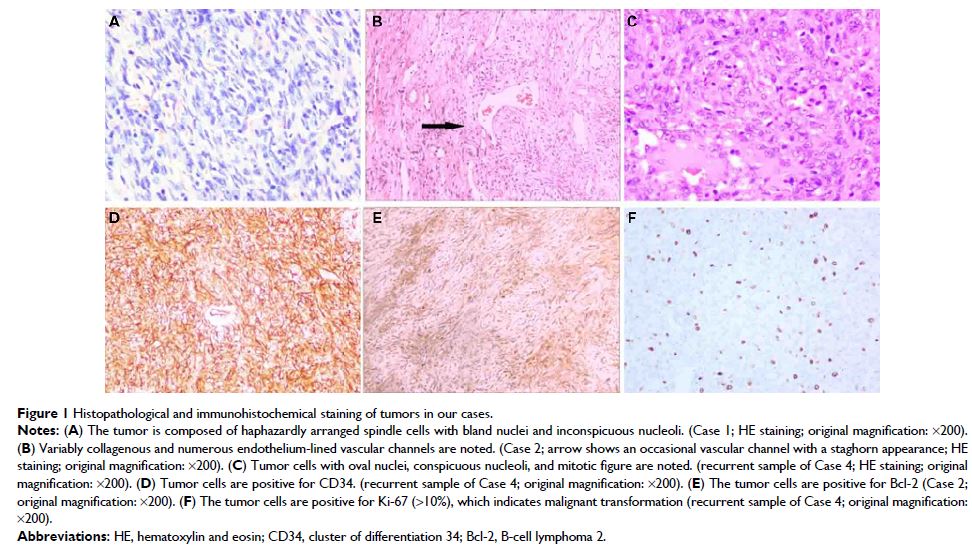108985
论文已发表
注册即可获取德孚的最新动态
IF 收录期刊
- 3.4 Breast Cancer (Dove Med Press)
- 3.2 Clin Epidemiol
- 2.6 Cancer Manag Res
- 2.9 Infect Drug Resist
- 3.7 Clin Interv Aging
- 5.1 Drug Des Dev Ther
- 3.1 Int J Chronic Obstr
- 6.6 Int J Nanomed
- 2.6 Int J Women's Health
- 2.9 Neuropsych Dis Treat
- 2.8 OncoTargets Ther
- 2.0 Patient Prefer Adher
- 2.2 Ther Clin Risk Manag
- 2.5 J Pain Res
- 3.0 Diabet Metab Synd Ob
- 3.2 Psychol Res Behav Ma
- 3.4 Nat Sci Sleep
- 1.8 Pharmgenomics Pers Med
- 2.0 Risk Manag Healthc Policy
- 4.1 J Inflamm Res
- 2.0 Int J Gen Med
- 3.4 J Hepatocell Carcinoma
- 3.0 J Asthma Allergy
- 2.2 Clin Cosmet Investig Dermatol
- 2.4 J Multidiscip Healthc

眼眶孤立纤维瘤:来自中国三级医院的临床病理学研究和文献综述
Authors Shen J, Li H, Feng S, Cui H
Received 10 February 2018
Accepted for publication 22 March 2018
Published 9 May 2018 Volume 2018:10 Pages 1069—1078
DOI https://doi.org/10.2147/CMAR.S165218
Checked for plagiarism Yes
Review by Single-blind
Peer reviewers approved by Dr Colin Mak
Peer reviewer comments 2
Editor who approved publication: Professor Nakshatri
Purpose: To report the clinical features, imaging manifestations,
histopathology, and immunohistochemical features of several cases of orbital
solitary fibrous tumors (SFTs) in a Chinese tertiary hospital, and to undertake
a literature review of this rare disease.
Methods: A non-comparative retrospective review of clinical presentations,
imaging manifestations, histopathology, and immunohistochemical features as
well as the management and disease outcomes of patients with orbital SFT was
conducted along with a review of orbital SFT cases in the literature.
Results: This study includes two male and two female patients, with an
average age of 53 years. Common presentations among these patients included a
palpable subcutaneous mass, swelling of the eyelid, proptosis, diplopia, and
vision disturbance. Three patients (cases 2–4) underwent imaging scans. All
patients had complete surgical excisions and the tissue was subjected to
pathological analysis. One patient (Case 4) experienced a recurrence with malignant
transformation and received a re-excision surgery and postoperative
radiotherapy. All patients remain alive and well after a minimum follow-up of
12 months (range 12–34 months).
Conclusion: Despite its rare occurrence, we suggest that the possibility of
orbital SFTs needs to be considered when a painless, slowly growing orbital
mass is identified. Typical characteristic magnetic resonance imaging features
of orbital SFTs are iso- or hypointense signals on T1 and T2-weighted images,
with marked enhancement. A positive cluster of differentiation 34 (CD34)
staining is an important diagnostic clue favoring SFT. Some orbital SFTs are
infiltrating, aggressive, or recur with malignant transformation. Therefore,
regular long-term follow-up after complete excision is mandatory.
Keywords: orbit, CD34, malignant transformation, MR
